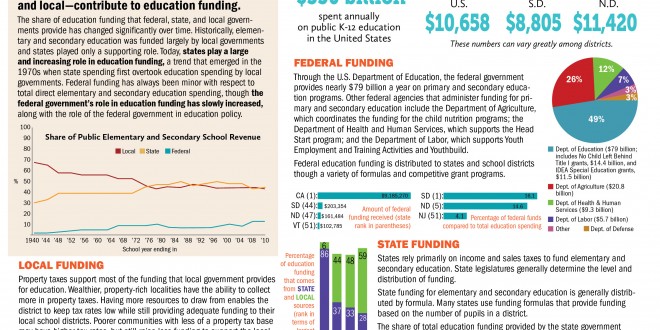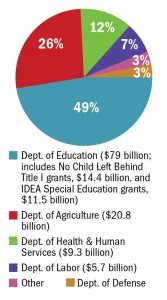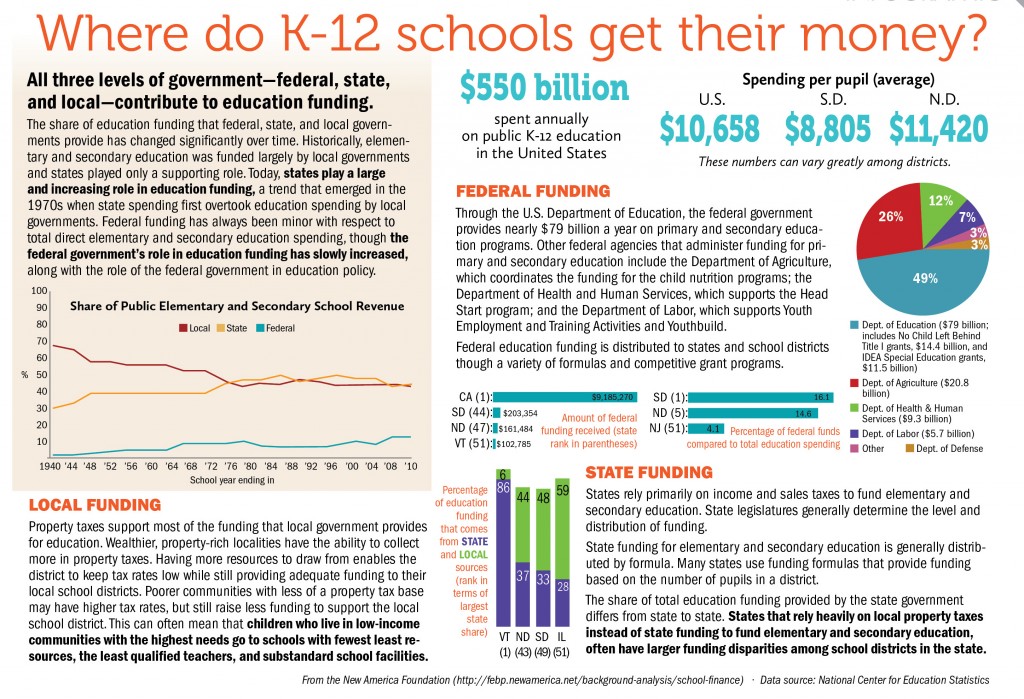All three levels of government—federal, state, and local—contribute to education funding.
The share of education funding that federal, state, and local governments provide has changed significantly over time. Historically, elementary and secondary education was funded largely by local governments and states played only a supporting role. Today, states play a large and increasing role in education funding, a trend that emerged in the 1970s when state spending first overtook education spending by local governments. Federal funding has always been minor with respect to total direct elementary and secondary education spending, though the federal government’s role in education funding has slowly increased, along with the role of the federal government in education policy.
Federal Funding
Through the U.S. Department of Education, the federal government provides nearly $79 billion a year on primary and secondary education programs. Other federal agencies that administer funding for primary and secondary education include the Department of Agriculture, which coordinates the funding for the child nutrition programs; the Department of Health and Human Services, which supports the Head Start program; and the Department of Labor, which supports Youth Employment and Training Activities and Youthbuild.
Federal education funding is distributed to states and school districts though a variety of formulas and competitive grant programs.
State Funding
States rely primarily on income and sales taxes to fund elementary and secondary education. State legislatures generally determine the level and distribution of funding.
State funding for elementary and secondary education is generally distributed by formula. Many states use funding formulas that provide funding based on the number of pupils in a district.
The share of total education funding provided by the state government differs from state to state. States that rely heavily on local property taxes instead of state funding to fund elementary and secondary education, often have larger funding disparities among school districts in the state.
Local Funding
Property taxes support most of the funding that local government provides for education. Wealthier, property-rich localities have the ability to collect more in property taxes. Having more resources to draw from enables the district to keep tax rates low while still providing adequate funding to their local school districts. Poorer communities with less of a property tax base may have higher tax rates, but still raise less funding to support the local school district. This can often mean that children who live in low-income communities with the highest needs go to schools with fewest least resources, the least qualified teachers, and substandard school facilities.
From the New America Foundation • Data source: National Center for Education Statistics
 Dakotafire Get your spark here.
Dakotafire Get your spark here.








